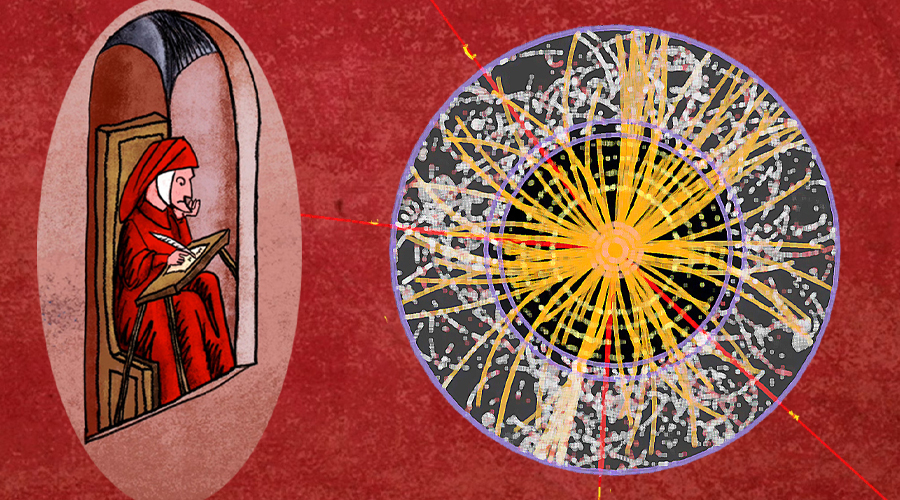 APRIL FOOL!
APRIL FOOL!
The presence of scientific elements and mathematical correlations within the Divine Comedy has been frequently studied mainly for its symbolic meanings, but it could also hide a very accurate prediction of one of the most studied properties in particle physics: the mass of the Higgs boson, also known as the God particle. A recent study by the Center for the Study of Dante's Symmetries (CSSD), published in "Medieval Science Studies", showed how some symmetries on the frequency of words found within the text can lead to a value of 125.32 GeV/c2, which is very close to that of the last estimate of the Higgs mass.
Following similar studies based on the search for symmetries in the lines of the Comedy, CSSD researchers examined the occurrences of the words "peso" and "grave" (in English, “weight” and “heavy”), which are semantically associated with the properties of the Higgs boson. It was found that the difference between the first and last appearance of the word "peso" is 10,231 lines, while the number of lines between the first and last appearance of the word "grave" is 787. The latter is the value assumed by a circumference whose radius is 125.32.
This very value is extremely close to the estimate currently reckoned for the mass of the Higgs boson, 125.35 GeV/c2, measured with high precision by CERN CMS experiment in 2019. The hypothesis that it is such an estimate is strengthened by the fact that the distances in verses of the words "peso" and "grave" are related to each other through a number, 13, which is equal to the number of times the group of letters "gev" appears in the verses of the Poet, signaling precisely the correct unit of measurement in which to read the result: if you divide, in fact, 10,231 by 13 you get just 787. An extremely accurate prediction, especially if the scientific knowledge of the time is considered.
"It is, therefore, very likely that Dante was inspired by the studies of Agobardo da Monaco, a contemporary astronomer and alchemist, who dealt with calculations of extremely small masses," added Carlo Brunelli, head of the CSSD scientific division. "Some scholars trace the figure of Agobardo back to Aldo dei Bardi, preceptor of Guido Cavalcanti, friend and companion of Dante, thanks to whom the Poet would have come into contact with Bardi's studies."
Dante's attention to internal symmetries in the text is undeniable and has often led to the unveiling of hidden meanings and symbology in the verses, a proof of the poet's encyclopedic knowledge. The probable link with Agobardo da Monaco opens a window on the knowledge related to the calculation of masses and strengthens the hypotheses of the CSSD researchers. The scientific collaborations of the LHC experiments, which have recently integrated some experts in the analysis of Dante's text in their interdisciplinary teams, now have great expectations for the data that will be collected in the next Run3 of the superaccelerator, which will soon be back in operation at the end of the upgrade works. The new data will allow to further refine the measurement of the mass of the Higgs boson, to define with increasing detail its properties and to describe the phenomena observed inside the accelerators. We await the next measurements to verify Dante’s prediction.






